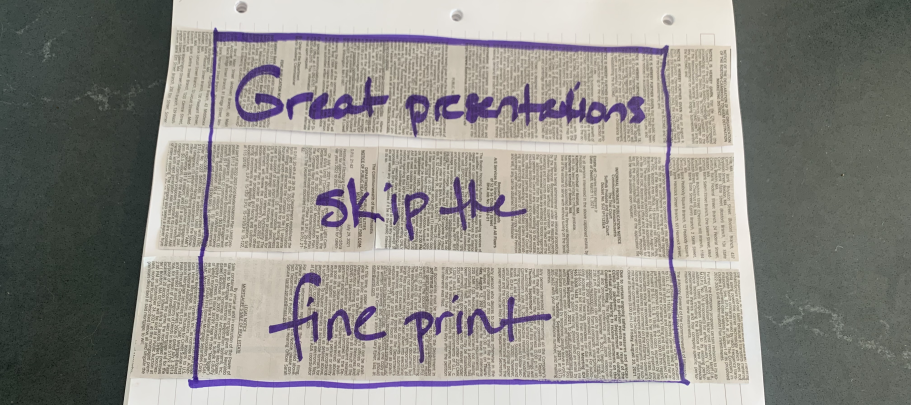
If your boss asks you to present to the CEO or the board of directors, you’re going to be sure you’re at the top of your game, aren’t you? You’ll think carefully about the story you’re trying to tell, choose facts to make your case and rehearse until you’re letter-perfect.
But if you’re presenting to your colleagues or an internal client, you probably won’t work so hard. You might pull out your latest internal communication plan and update a section or two. Or draft some bullet points on a PowerPoint slide.
While it’s true that you don’t need to pull out all the stops every time you present, I’d like to encourage you to be more mindful about the process. After all, a presentation is your opportunity to demonstrate your knowledge... get buy-in for a proposed approach... or influence a stakeholder to support your point of view.
That’s why I put a bit of extra effort into every presentation I make. Here’s how:
- Set objectives. I start with this essential question: "What is the one thing I need this presentation to accomplish?" (Another way of stating it: "What does success look like?")
- Understand what stakeholders need. I think about the value I’m going to bring to the people I’m presenting to. After all, don’t you want stakeholders to feel like their time was well spent?
- Decide on the approach (also known as an agenda). I map out how I’m going to tell my story, building into interactive exercises and opportunities for dialogue.
- Emphasize visuals. PowerPoint is meant to be a visual medium—and the purpose of projecting slides is to reinforce your points (not repeat them). Studies have shown that 83% of human learning occurs visually, so employ every visual in your toolbox: photos, charts, infographics, etc.
- Create a lot of slides. The other day, I watched a communicator present three slides, each of which consisted of a table with 12-point text. I wanted to remind him that slides are free. So, by taking dense content and converting it into many slides, your presentation keeps moving. And your audience moves along with you.
- Provide useful action steps. I'll admit I'm a tough audience: When I attend a session, I expect to learn something I can immediately put into practice. That’s why the best presentations are clear about at least one of these: What’s in it for you, what I need from you and/or what you can do with this information.
Yes, this approach takes a little more time, but the result is absolutely worth the effort.




